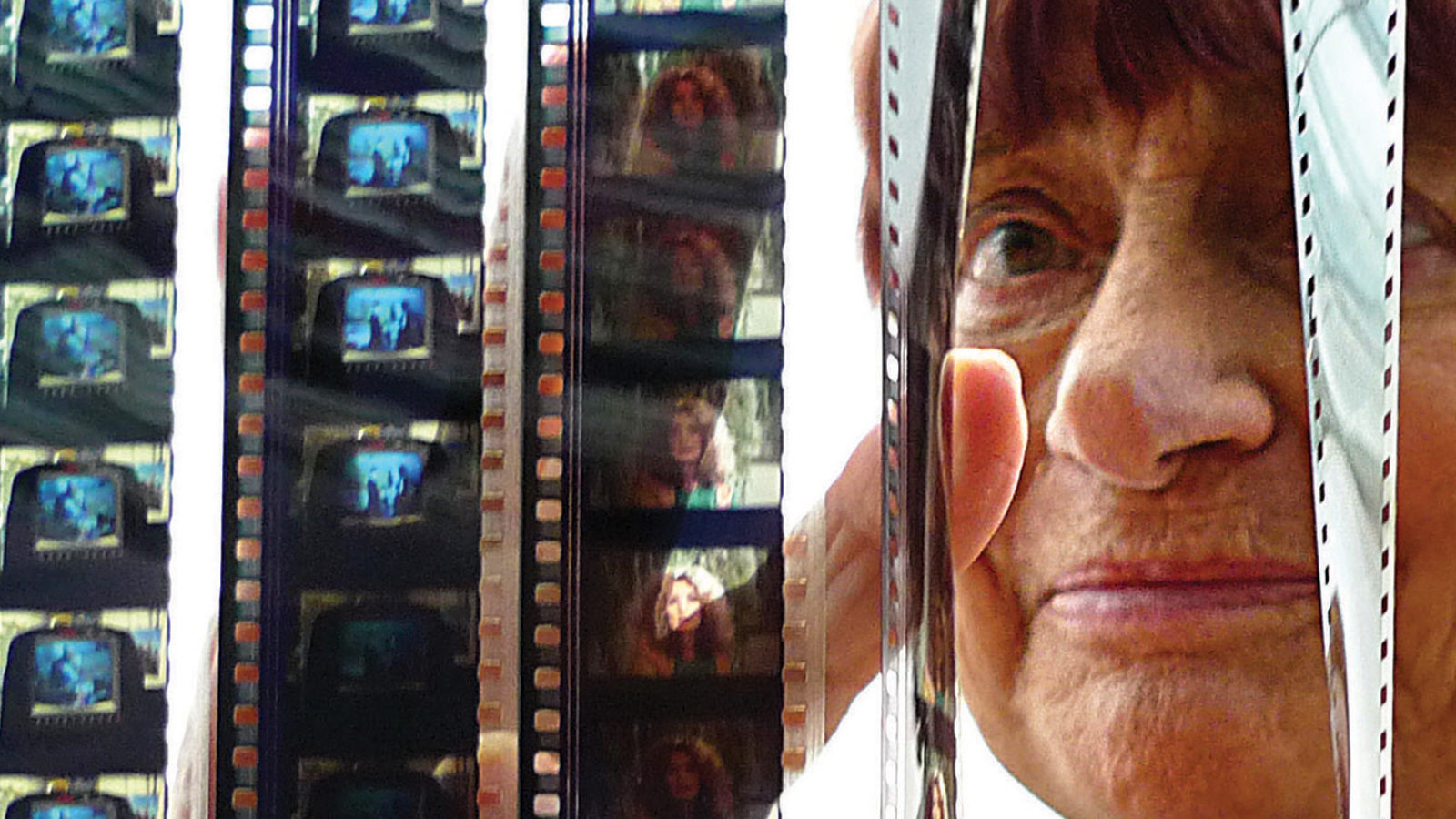
We Can Be Heroes: Agnès Varda
Talking to villagers across France and posting giant images of them onto walls, Agnès Varda and JR rode together all over the countryside to bring us their new film, Faces Places. The two put ordinary people in the spotlight, giving them a platform for not only their images but their voices. The power of Faces Places (Visages Villages in French) lies in the telling of stories: the filmmakers and the people they meet recount personal details, and new experiences and social events are created through the staging of photo shoots. Taken together, the modern tales they tell become testimonies of our times.

Faces Places is a traveling chronicle, a bit like The Beaches of Agnès (2008) with more strangers and one major addition: Varda’s companion is her friend JR, the shades-wearing artist best known for pasting similar, huge black-and-white photos onto buildings and other surfaces. The duo take to the road in a camera-van equipped with a photo booth and a large-format printer. They chat with farmers, factory workers, a café waitress, a postman, JR’s centenarian grandmother… and whomever else they meet (which may or may not include Jean-Luc Godard). Photos are orchestrated and pasted onto buildings and bunkers, homespun wisdom is gleaned, and throughout the episodic, worker-friendly endeavor, Varda and JR keep up a sweet banter that runs both light and serious, playful and suddenly, disarmingly real.
One of them was past her 89th spring, the other was only 34 years old, and neither had ever co-directed a film. Yet hand in hand, Varda and JR leap over that gap in age and achieve in Faces Places a comprehensive collaboration: JR’s street art combines with Varda’s art of montage (and photography) to create a lively and poignant variation on her legendary cinema. Faces Places is a work about memory, friendship, the life and death of people, and the nature of life itself. The film, which premiered last May at Cannes, reestablishes—as in so much of Varda’s art—that the smaller the subject seems, the greater the film can be.
I visited Varda at her Paris home base in Montparnasse. Curious and impatient, cerebral and impassioned, she never passed up an opportunity to ask a rhetorical question and follow the dialogue wherever it went. I brought her a picture album about China, she showed me the catalog of her exhibition; we made an exchange. Quite apart from her films, Varda herself is an indelibly great storyteller. I was invited into her kitchen, where the idea for this film had been born, with the aspiration of accomplishing an interview resembling her: petite, nimble, intimate, elegant. She asked the first question: tea or coffee?
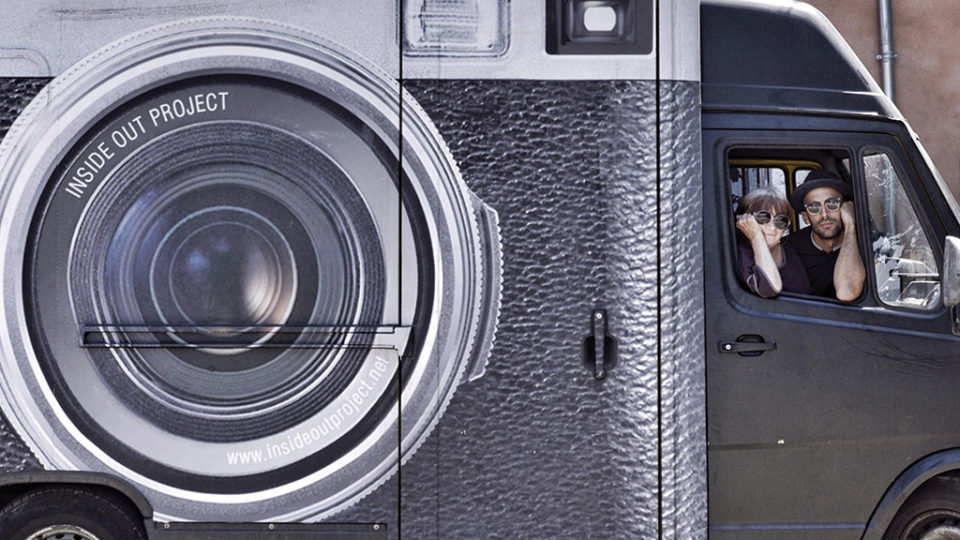
Tea, please. It’s extremely difficult to combine lightness and elegance in a film, but you did. Many movies are beautiful and smart, but few of them can be serious and delicate at the same time. We should also talk about your other works and yourself.
Oh no, I’ve had enough of telling my own stories. I have done a lot of interviews, written plenty of articles, and even a book about myself. I do not want to repeat. You know, when I did an exhibition in Beijing and Wuhan, there was a Chinese book about it. I will show you…
I know of this book, but I have never seen it… [Flips through the pages] I remember a photo of you, with a straw hat, sitting on the bank of the Yangtze River. Was Chris Marker with you during that trip to China?
It was when they built the Yangtze River Bridge. We were not in the same group; Chris Marker had been in China the year before. I took a lot of photos during this trip, tons of portraits of the people, such as children in the street, women with bound feet, working-class people, and so on.
Was becoming a photographer your first aspiration? Or just a transition to becoming a director?
Aspiration? No, it’s my profession, and also what I did for a living. I did many family photos. Sometimes I even took photos for the railway company.
For the railway company?
News reports about the company, mini-expositions for their staff, photos of them while they were cleaning the trains, etc. It wasn’t for advertising, but the company wanted to promote railway culture. [She now skims through the book I returned to her.] All the captions are in Chinese, which I can’t understand, but the images themselves can depict so many things. There are many beautiful photos, but also cruel ones. Our history is full of cruelty. That reminds me of war: as you can see in the film with JR, we pasted an image on the debris of a German World War II bunker that had fallen onto the beach.
It’s as if you put your friend Guy Bourdin into a cradle. The photo you paste on the bunker is of him sitting against a wall, and by rotating that picture, the bunker comes to look like a cradle for him, as if he is leaning back. That scene is surrealistic.
The army that landed on that beach at the end of World War II was from Canada. Seven decades later, JR and I created our artistic work there, on that same beach where many of these Canadian boys lost their lives, liberating us. Our world goes round in circles ceaselessly—destroyed, rebuilt, and then perhaps starting all over again. War and peace, cruise ship, cargo ship, and battleship… I felt like everything is coming round again and again.
It’s also a scene about the fragility of the memory. When high tide comes, Guy Bourdin’s picture disappears with it, washed away. Artworks and perhaps art itself are fleeting, like writing on water.
Creating this kind of ephemeral thing could be our intent, and even part of our desire. This photo was the most difficult to put up: we needed to calculate the time between tides. Ultimately we had only six or seven hours.
This is the first time you have co-directed a film with another artist. How did the two of you share the work and the direction?
It was 100 percent a collaboration between JR and me. Nobody was a decision-maker, or a simple executor. The desire to make a film together came rather quickly. We talked a lot, just like you and I are doing now in this kitchen, coming upon the ideas, then finding ways to realize them. We asked each other, “Do you know this/that?” or said, “That could be interesting,” etc.
So how did you get the idea for the bunker photo?
JR told me that he often goes to that beach to ride his motorcycle. I didn’t pay much attention, until one day he mentioned the name of that place. I immediately said that could be an idea, and when I saw him hesitate a little, I proposed that we go look at the beach together and then make a decision. Once we arrived, I told him that I had been there in 1954 with my good friend, photographer Guy Bourdin, and it was here that I took my photo that later became the center of my film Ulysse [1982]. The only difference is that the bunker had not fallen yet, and Guy is not here anymore.
I told him this story and all these coincidental things, but we like objective coincidence to become something subjective. So we went to a café to discuss which photo we should choose, until we found a photo that I took of Guy at that time [sitting against a wall]. The choice became obvious. The big question was, how could we put it up? Later, JR and his partner found this genius idea.
It’s an essential scene in the film because it says a lot of things at once while being very touching. This is wreckage from the painful war, but it’s also a warm cradle for a friend.
We reinvented this photo. Guy Bourdin became a child. This kind of transfer—I mean the transfer of ideas and feelings—gives a new meaning to our act of creation. When I met Guy, he was only 22 years old, a nearly unknown boy. This ephemeral tribute makes us both happy and blue. We feel very strongly that this work is neither brash nor pretentious, but rather it comes out of a desire to share with others.
To share the desire with others.
Most of the time, our desire is to know different people, to talk to them and to share their stories, to share a moment of their lives, or just to take pictures of them and for them, like with the miners at the beginning of the film. Their happiness enchants us, and often they give back brilliant ideas or beautiful words. With the postman, we had a joyful moment. Writing a letter, stamping it, and having it sent by a postman personally—that was something my generation did, but I still like to do it. We turn those ordinary people into heroes—heroes of their own villages.
It was also very amusing to direct the film with JR—we both laughed a lot! The atmosphere of the movie is very pleasant, isn’t it?
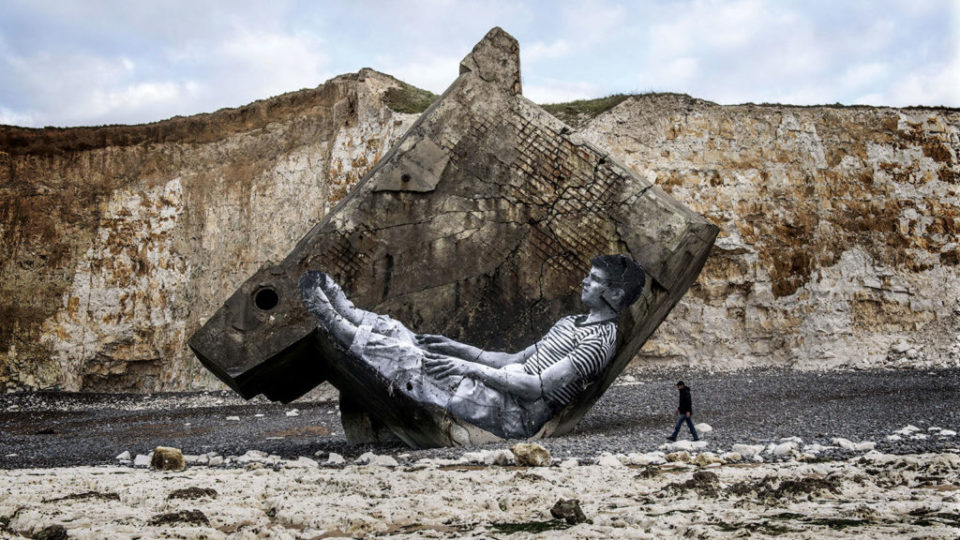
It is. With JR, you pay tribute to artists and, as you say, make ordinary people heroes. There is a sense of collectivity: the people in the film are not the subjects of your work but participants in its creation.
There was a worker passing by who formulated a particularly beautiful phrase: “Art is created to surprise people.” We are not asking them to become our models but inviting them to join us in a game. In the [sequence with the] village that was going to be abandoned, the villagers even asked to cut the photos by themselves. They said: “We are going to make the village popular again with these photos.” Of course, it is symbolic, and there is even a double ephemerality in it: all the photos will be demolished with the village. We live in a fragile world: its state is fragile, and we ourselves are even more fragile. I am no longer young—the fragility of my life just blended into the film.
Faces Places reflects your personality to a large extent, for example, the feminist side.
And JR’s, because he is also a feminist. Can you imagine that the wives of the dockworkers had never been to the dock, the place where their husbands work every day? So we put their photos in between the cargo containers that were stacked like three totems, and invited them to climb up as if to push them into the center of the men’s world. It’s true that it is a feminist scene, but it also explains the honor of art. The workers were on a strike, but still the dockworker agreed to construct these pillars of containers, like playing with Legos. Whatever happens, let’s give a place to art, a privileged place.
You repeat the word “ephemeral.” Does it mean that as an artist you don’t think about the posterity of your work?
We artists certainly have the sincere desire that people will not forget us. I know this film may leave theaters after only a few months. But when I went to Korea, people there discussed Cléo from 5 to 7 with me, and in the south of Brazil, in a small theater, many in the audience were extremely familiar with my films. That surprised me and made me happy.
It took you a very long time to finish this film, almost two years. How was the shoot organized?
I really start to forget things—although that’s normal for people at my age. I don’t keep a diary either, so I forget a lot. What’s strange is that the more recent the events are, the more quickly I forget them! Luckily, I have at my side a wonderful daughter, Rosalie Varda, who produces my films. She found the financing for this film, which was not normal financing, because I can’t shoot for more than four days at a time; I become tired very quickly. So I need to have a rest, and in the meantime, find some new ideas. With JR, we agreed to shoot only four days per month, and ultimately we spent nearly two years shooting. No producer could accept this kind of project, so Rosalie needed to find money little by little, and she succeeded, wonderfully! So once we got some money, we’d restart filming.
Rosalie loves my work, and she is also the executive of our little production house, Ciné-Tamaris, along with my son Mathieu Demy, who lives in Los Angeles. Mathieu was in Paris recently, and we will all go to Cannes together!
It will be a happy moment!
I feel really lucky that I can continue making films at my age, with all my children supporting me. Do you want some hot water? Since my trip to China in 1957, I got into the habit of drinking a mug of hot water every morning, like the Chinese. By the way, it suddenly comes to mind that exactly 60 years ago I spent International Workers’ Day in China. We got the chance to meet Mao Tse-tung; we shook hands with Zhou Enlai. The trip opened my eyes, because it was at the beginning of the revolution, and we could feel strongly that sense of happiness. Although it changed a lot later, I still feel very lucky to have seen only the beginning. And not just the Chinese revolution, the Cuban Revolution also. A lot of hope, a lot of joy. Our translator had a heavy Belgian accent; we really had so much fun.
But you can’t speak Chinese at all… Despite the joke that Chris Marker made about you on Sunday in Peking [1956]: he credited you as Chinese-language advisor.
What a joke! [Laughs] I helped him a little bit with shooting the objets that he brought from China: the documents, dolls, and other accessories that he integrated into the film later. So he wanted to thank me, and in thanking me, he made this joke. In fact there are tons of language mistakes in the film! He was joking in his particular way. I liked him a lot.
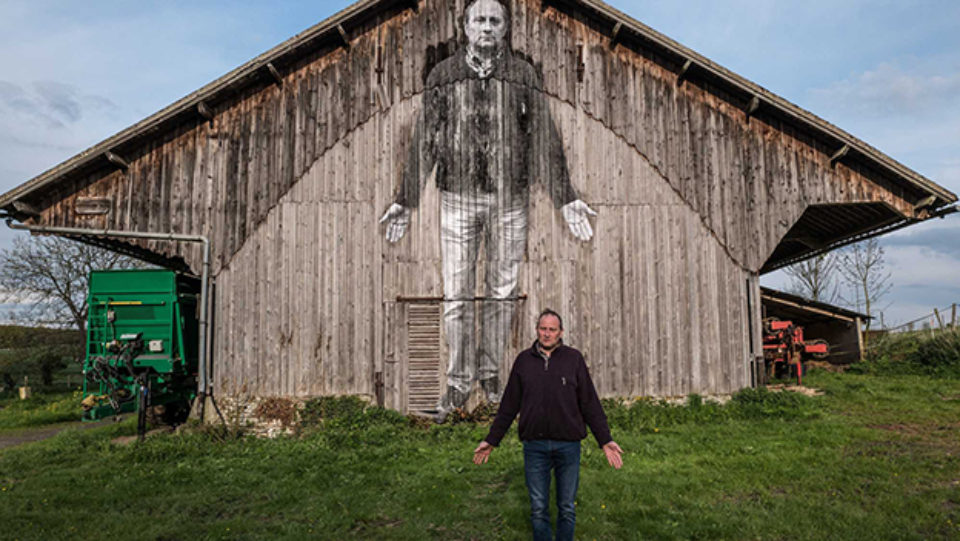
You’d been very close to Marker and Alain Resnais since the beginning of your career. It was Resnais who edited your first film, La Pointe Courte [1955]. How did you know them?
That was another adventure. I was only 26 years old, the entire crew was working for free—in fact there were only six crew members! After the shoot, the film needed an editor, and I couldn’t afford one so I needed a hand for free. I was wondering who could help me, and all my friends were telling me that nobody would do that. Until one day, someone suddenly brought up that there is a guy who is a leftist…
…who also lives in the Left Bank.
And who also lives in the Left Bank [laughs], who’s quite a good editor, and his name is Alain Resnais. He’d already made some short films, etc. So I wrote him a letter. He lived at that time in the 14th arrondissement. “Sir, I want to meet you, because…” He came to my place—I already lived here!—and I asked him if he could edit my film. He replied that we should watch the dailies first. So we went to the lab, [where] there were 13 or 14 hours of raw footage in all, without sound. I asked if he needed me to read the dialogue at the same time. “No, no,” he shook his head. After two hours, he stood up and told me that he was not sure, he couldn’t decide yet, and even if he could accept, it would be a tough job, and so on. We shook hands and said goodbye, and I sent him the script the next morning. After reading it, he told me that what I seek is too close to his [own] idea, so he did not want to do it. “Farewell!”
How did you make him change his mind?
He phoned me two weeks later: “Have you found someone to help you?” I said no. Then he asked if I was willing to do it myself, starting by marking all the sequences of the film. Of course I was, so he brought me an amateur editing machine, and I started to mark up day and night, because he told me that even if I could find an editor later, this work needed to be done first. Another two weeks passed; the phone rang again: “Where are you with your work?” I said it is already finished. He said with an astonished tone: “You already marked it all?!” I answered yes. He said: “Well, you are really crazy, I will edit your film.”
But still unpaid! [Laughs]
He came everyday, from 9 a.m. to noon, and then from the afternoon until 6 p.m., for free, as long as I gave him a little money for us to have lunch together. During this time, I found that every day he made a phone call to somebody named Chris Marker. I met Marker later; he often came here to join us, riding a motorcycle, wearing a leather jacket. We became good friends. Have you ever watched The Beaches of Agnès? I made a cat-shaped cut-out modeled after his cat Guillaume-en-Égypte to represent Marker, and then I took a walk with him!
And you are one of the rare people to have had permission to shoot in his studio—that perfectly ordered but chaotic studio!
I miss him a lot. People of my generation have begun to pass away. I saw Resnais much less since then, but Marker and I kept seeing each other. There is only one old friend left now, Jean-Luc Godard.
The unseen Jean-Luc Godard, whom you are supposed to rendezvous with at the end of the film…
What do you think of the ending?
I think it is beautiful. A bit of regret gives the film more color. After the screening, it struck me: if you had seen Godard and recorded him on camera, that could be less interesting…
Bravo! [Claps her hands] That’s what we thought, too. During the editing, we found that he actually participated in the film with his non-presence, which made the film even more cinematic: a meeting that did not happen. After everything, I sent him a DVD…
But still no response.
Complete silence.
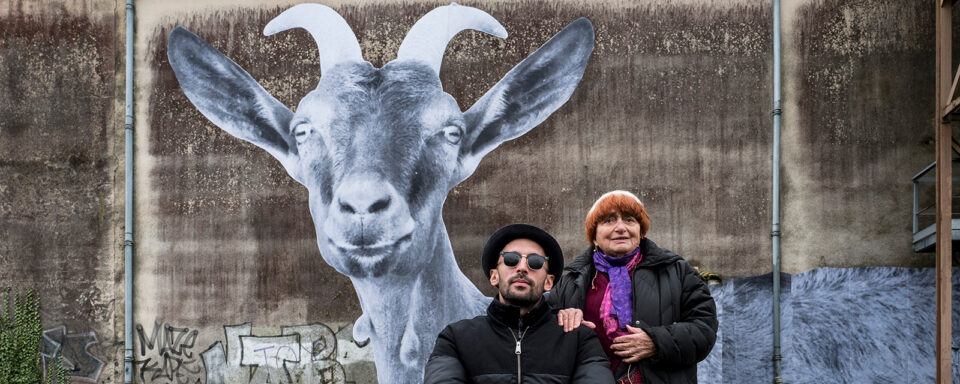
The coded lines that Godard leaves for you written on his house’s front window are very touching.
It is typical of him! The first line is “In the city of Douarnenez.” La Ville de Douarnenez is in fact the name of a restaurant near Montparnasse where Jacques [Demy], Jean-Luc, and I went to have dinner once. When Jacques passed away, instead of the usual condolences I received a telegram from him with only these words: “In the city of Douarnenez, Jean-Luc.” When I saw this line again, I immediately thought of that telegram—it was really a terrible blow for me, I nearly cried.
Then the second line: “Du côté de la côte.” First, it is of course the title of my short film about the French Riviera in 1958. Later, by the lake, I remembered that Jean-Luc once rented a villa near Nice and invited us to spend a vacation there together. We had a very happy time, but Jean-Luc joked every day by saying again and again, “What can I do? I don’t know what to do!”
That phrase later became a line in Pierrot le fou [1965].
Those are indeed very good memories. It’s a bit of a sad ending to the film, but still very good, right?
It is quite good, and in fact the whole film is based on all these successive encounters, so in the end such a non-encounter gives the film another vibration.
Absolutely right. Another part of the fact is that, even though I got along very well with Jacques and all these friends, there was a period full of sadness in my life. Although I’m quite happy to be old, my whole body often aches, and I have the feeling that the end is approaching. At some point, I will eventually bid farewell to my own life.
Are you afraid of that?
Death? No, no, not at all. I tell myself, my health is fading, I’m losing my memory, I am more and more weak… but these are all normal processes of human life. By the way, did the eye operation scene disgust you?
No, why?
Because I am afraid that some people will feel uncomfortable.
It’s all right! And anyway, many viewers will be cinephiles who have seen A Clockwork Orange…
That’s not a film I like very much. I’m afraid that this new film is a bit too simple. [One of Varda’s cats comes over.] This is Nini, the loveliest cat. She is also in the film. Put your legs flat, she may jump up and say hello to you.
How many cats do you have now?
Three. Let’s get back to the movie. JR and I wanted a simple film: an adventure, a trip, a photo-van, a kind of magic for illuminating other people…
Yes, and suddenly I realize that Godard actually did a very beautiful thing to complete this film by hinting at Jacques Demy. In many of your previous movies, Demy plays the role of a hidden clue, for interpreting the movie. Not so in this one—until Godard reminds you.
I like what you’re saying. I remember that during the shoot of The Beaches of Agnès, I told myself that I hoped the absence of Jacques Demy could be represented in the film. This new movie is an adventure for JR and me, but at the last moment, through Jean-Luc’s words, I found that the death of Jacques is still so heavy for me. I have always said that chance is my best assistant: I don’t like to plan everything beforehand, and I rarely write everything in advance. For this film, we might only have had one page written before shooting.
I want to read you something. Please tell me what you think about it: “Even if we need to deal with a very serious theme, don’t lose the pleasure of making a movie, because that’s the quintessence of life.”
Not only do I totally agree with that, it is also what I am always trying to do.
Not only are you always doing that—it was also a sentence that you said a few decades ago.
We did the same thing in making this movie. Throughout, many of the places we filmed are under quite bad social conditions: unemployment for the workers, the bankruptcy of a company, the demolition of a village, and even a strike of the dockworkers. But I kept telling myself, and JR agreed with me, that we are neither journalists nor sociologists—the former needs news, and the latter needs sociological samples. Although we observed these kinds of social relations and class divisions very clearly, I believe that an artist needs to sense and capture the relationships between the people and give a new angle on them, and then share this point of view.
One last question: when you visit the grave of the photographer Henri Cartier-Bresson, you mention that he later grew to dislike the concept he called the “decisive moment” [l’instant décisif].
We still quote it constantly, of course. That is a very beautiful phrase.
Why did he come to dislike it? He didn’t agree with it anymore?
I don’t know. Sometimes people don’t like when their own words are repeated and repeated by others. Maybe he really had had enough of these words becoming a bible for photographers. By the way, talking about death in that cemetery is a wonderful thing, but again it was pure chance. We were not far from there, and after looking at the map, I thought suddenly that Bresson was buried there. Ideas arrive like that, by taking a glance at a map, chatting with others.
Thank you, Agnès, I am very happy with our ba-varda-ge! [French for “chat”]
Ai ya ya! You have found that in bavardage, there is a Varda!
Closer Look: Faces Places screens in the 55th New York Film Festival and opens in late October.
Wang Muyan is a critic based in Paris.







